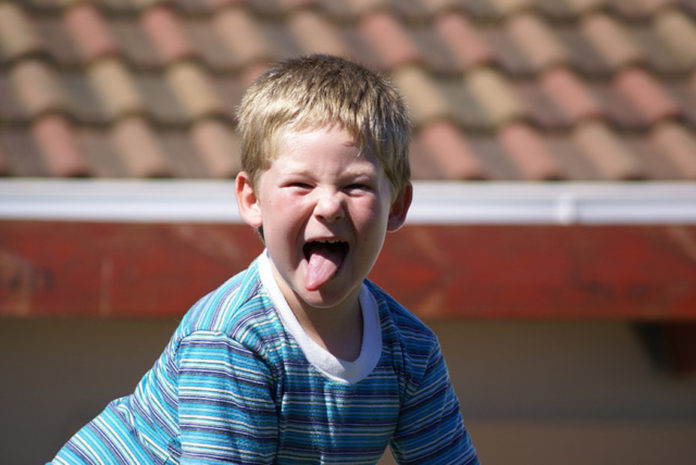

Bernadette Saunders, Monash University and Bronwyn Naylor, Monash University
Picture this: you’re standing in a long, slow-moving queue. People around you are disgruntled and complaining. You turn to talk with the person behind you and someone else jumps the queue in front of you. Is it okay to slap him or her – not to hurt them – just to give a clear message that such behaviour is unacceptable?
What if this person’s understanding was limited? Would a slap be more acceptable, more effective? Of course not.
In either of these examples, the “slapper” could be charged with assault. And they certainly couldn’t use the defence of “lawful correction” or “reasonable chastisement” to reflect society’s expectations that citizens ought to behave civilly.
But put a child and his or her parent in this scenario and everything changes.
Psychological impact of hitting
Based on the results of a study published last month which linked “harsh physical punishment” with mental disorders and substance abuse later in life, we wrote an article The Conversation arguing It’s never okay to hit your kids.
The “harsh physical punishment” studied was defined as “includ[ing] acts of physical force beyond slapping, which some may consider more severe than ‘customary’ physical punishment (i.e. spanking)” but was not at the level of “physical abuse”, defined as “being hit so hard it left marks, bruises, or caused an injury”.
The study’s authors concluded that “reducing physical punishment may help decrease the prevalence of mental disorders in the general population”. This adds support to 20 years of research associating physical punishment with harmful effects in childhood and adulthood.
Based on this evidence, we concluded that the defence of “reasonable chastisement” should be removed, giving children the same protection from assault as adults. Heated debate followed. Some readers accused us of bias, misinterpretation of the evidence, and wanting to punish well-meaning parents. Smacking a child was argued to be integral to loving discipline, gaining respect and protecting children from harm.
Cultural change and generational rejection of hitting children was acknowledged by some; while others insisted that smacking children was a parent’s responsibility, effective as discipline (even when children didn’t respond to repeated warnings) and less harmful than verbal reprimands.
Just a little smack?
We often preface words like slap and smack with “only a little” or “just”. These words serve to make the act of hitting a child sound better, or more socially acceptable.
Most parents who smack commonly hit their child with a hand once or more on the bottom, legs or arms. But a smack can refer to anything from a tap on a child’s clothed bottom; gently or forcefully hitting any part of a child’s body, including the face or head; to single or repeated hitting; and hitting a child with a belt, wooden spoon or other object.
A “smack” may cause little physical pain or it could leave a red mark, bruise or injury.

Kenski
Changing attitudes
Some parents who were physically punished as children may continue this custom. A 2006 Australian Childhood Foundation survey of 720 adults found that 45% of respondents thought hitting that left a mark was acceptable. One in ten thought the use of implements was okay, and a few thought it acceptable to shake children or strike their heads.
But attitudes are changing in the Australian community. Increasing numbers of parents who were smacked as children now reject it as a disciplinary response, though some still use “little smacks” that are forceful enough to at least gain a child’s attention. The child may not be harmed, but even these “little smacks” are not necessary.
Smacking shows children that people are allowed to use physical force to achieve compliance, even when the reason for complying may not be just, fair or even understood. The child is denied the dignity and respect to which children, as human beings, are entitled. And there are certainly more constructive and benign alternatives.
Protecting children from harm requires forethought and supervision, particularly when children are too young to understand dangerous situations. Physically restraining children to protect them from harm isn’t punishment.
But hitting children as punishment for behaviours to be expected in childhood may unnecessarily distress and confuse the child. Establishing age-appropriate boundaries and communicating important messages about safety are more respectful and appropriate alternatives.
Legal considerations
Increasing intolerance of hitting children presents some challenges. What guidance, for instance, does current law provide to people arriving in Australia from countries where “harsh physical punishment” is customary? In Australian courts, cases have arisen where newly arrived parents’ perceptions of “reasonable” physical punishment have been held to be unreasonable.
More broadly, Australian parents are still legally allowed to physically punish their children, although the line between lawful correction and assault is not clearly spelt out.
New South Wales is the only Australian state to attempt to clearly define the “lawful correction” defence to parental assault of a child. It can only be raised if a parent hits a child below the shoulders and does not cause harm lasting more than a short period.
But even physical discipline which goes beyond what is legally allowed does not necessarily result in a conviction, if seen as “trivial”. After the reform, a parent charged with slapping her 16-year-old daughter’s face while in the presence of NSW police escaped conviction.
Prosecutions and convictions reflect societal and judicial values. So reforms to the defence of lawful correction need to be accompanied by easily accessible community education about positive discipline. Reforms should also promote greater awareness of the challenges parents face, along with greater support systems.
Lessons from abroad
In countries such as Sweden, where smacking and slapping children has been banned since 1979, attitudes to children’s rights have dramatically changed. They are now recognised in law and parents are supported, through education and welfare initiatives, to reduce their reliance on physical punishment.
Swedish parents who occasionally smack their children have not had their kids removed, and they have not been convicted on assault charges. But they and their children have no doubt that smacking is not okay.
Law reforms have been educative, encouraging parents to discipline children without resort to unnecessary smacking and slapping. This is the approach we should see in Australia.
![]()
Bernadette Saunders is Senior Lecturer Social Work at Monash University.
Bronwyn Naylor is Associate professor at Monash University.
This article was originally published on The Conversation.
Read the original article.



















